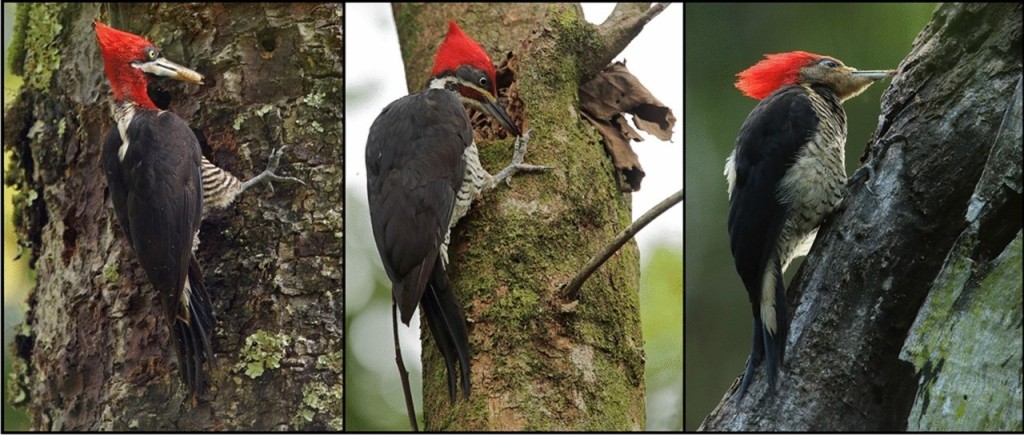Could the interspecific social dominance hypothesis explain this plumage convergence?
I recently bought “All the Birds of the World” from Lynx Editions. The title of the book nicely captures its contents, this huge tome contains beautiful drawings of literally all the (known) bird species in the world. Apart from looking up specific species, I enjoy browsing through the pages and admiring the amazing diversity of birds. Skimming the section on woodpeckers (family Picidae), I noticed the striking similarities between distantly related species. For example, several species seem to have converged upon a plumage pattern that consists of a black-and-white body with an eye-catching red crest. Many ornithologists have made this observation (technically known as mimicry complexes) and there are countless hypotheses to explain why certain woodpecker species look alike.
One possible explanation for this plumage convergence is the “interspecific social dominance hypothesis” which states that subordinate species will look like a dominant one to avoid attacks by the dominant species. A recent study in the Journal of Ornithology tested this hypothesis for three South American woodpeckers.
Niche Differentiation
Juan Manuel Fernández and his colleagues studied the ecology of Robust Woodpecker (Campephilus robustus), Lineated Woodpecker (Dryocopus lineatus) and Helmeted Woodpecker (Celeus galeatus) in Argentina. Based on the size of these species, the researchers considered the smaller Lineated Woodpecker and Helmeted Woodpecker as subordinate mimics of the dominant Robust Woodpecker. According to the “interspecific social dominance hypothesis”, the three species should be ecological competitors and thus occupy in the same niches.
However, careful observations revealed clear niche differentiation. It turned out that the three species forage on different parts of the tree. Helmeted Woodpecker collected food on smaller trees and was often seen on dead branches in living trees. Lineated Woodpecker foraged on similar trees compared to Helmeted Woodpecker, but mainly used living healthy trees. And Robust Woodpecker was mainly observed on larger trees and frequently visited dead parts of living and decaying trees. In addition, the researchers did not record any direct interactions between the three species.

Deception
These results do not support the “interspecific social dominance hypothesis”. It could be that interspecific interactions in the past have driven these woodpecker species into different niches. But there are alternative explanations. The subordinate species might mimic the dominant species to deceive predators. The larger Robust Woodpecker is not an easy prey for small raptors, such as Sparrowhawks (genus Accipiter). These birds of prey might think twice before attacking a woodpecker that looks like a Robust Woodpecker.
It is also possible that the Lineated Woodpecker and the Helmeted Woodpecker are deceiving members of their own species to avoid direct competition. From a distance, birds might think that a dominant Robust Woodpecker is chiseling away at a tree branch and decide to look for another foraging spot. These explanations remain to be tested with more observations. I won’t mind putting my “All the Birds of the World” book aside and venturing into the Argentine forests.
References
Fernández, J. M., Areta, J. I., & Lammertink, M. (2020). Does foraging competition drive plumage convergence in three look-alike Atlantic Forest woodpecker species?. Journal of Ornithology, 161(4), 1105-1116.
Featured image; Lineated Woodpecker (Dryocopus lineatus) © panza-rayada | Wikimedia Commons

[…] but I wanted to add something. Then I remembered a blog post that I wrote some time ago: “Why do Robust Woodpecker, Lineated Woodpecker and Helmeted Woodpecker look alike?” These three species belong to different genera, but look scarily similar. This impressive […]